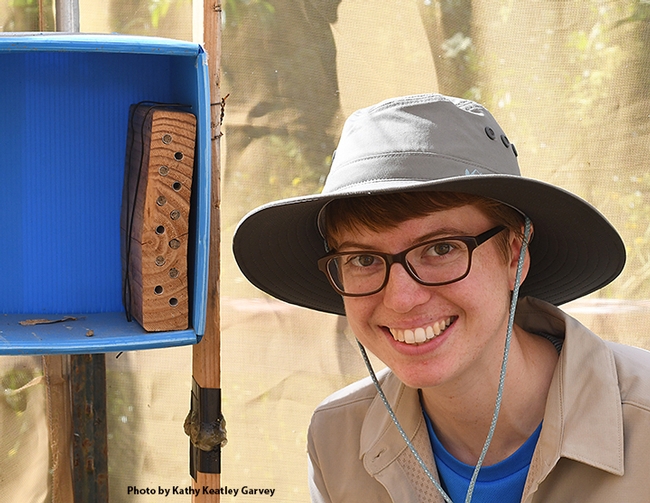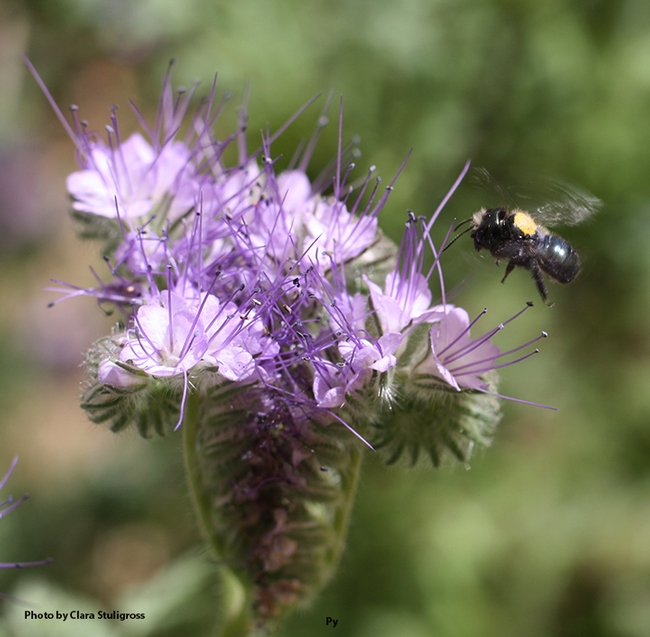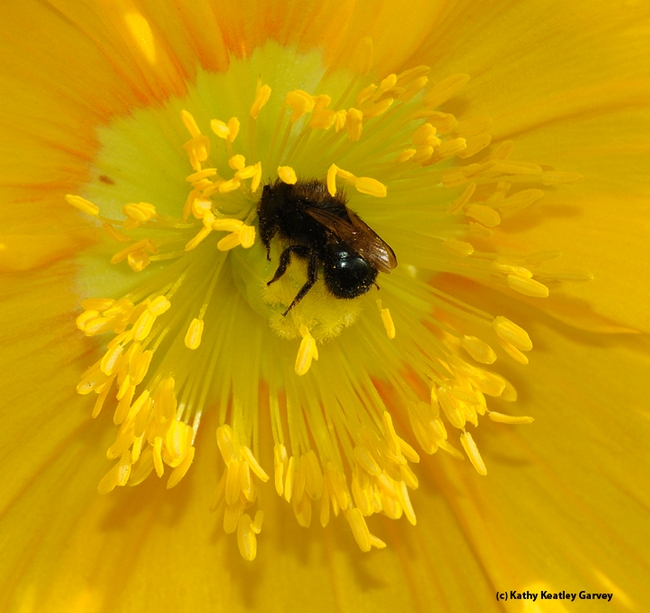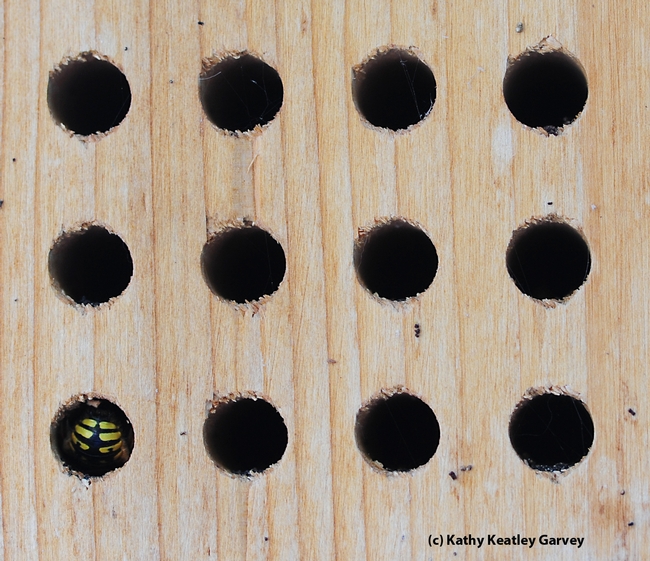
Posts Tagged: Osmia
UC Davis Research: A Double Punch to the Blue Orchard Bee
In a first-of-its-kind study, UC Davis research shows that the double punch of pesticide exposure and food scarcity drastically affects the reproduction of the blue orchard bee, Osmia lignaria, a wild bee known for pollinating early spring bloom, including almonds. Lead author...

UC Davis doctoral student Clara Stuligross by her blue orchard bee nests in the spring of 2018. (Photo by Kathy Keatley Garvey)

A blue orchard bee, Osmia lignaria (marked in yellow), heading for Phacelia tanacetifolia. (Photo by Clara Stuligross)
Here's the Buzz That Might Change How We Think
Talk about a good insurance policy. Researchers at Michigan State University (MSU) just published an article in the Journal of Applied Ecology that indicates that blueberry growers who invest in nearby wildflower habitat to attract and support wild bees can increase their crop yields....

An Osmia (family Megachilidae) pollinating a flower. (Photo by Kathy Keatley Garvey)

The blue orchard bee, Osmia lignaria, is one of the bees that Neal Williams' lab is studying. (Photo by Kathy Keatley Garvey)

Close-up of Osmia lignaria on phacelia. (Photo by Kathy Keatley Garvey)
About Those Non-Social Bees...
About those non-social bees... A good place to learn about them is at the UC Davis Department of Entomology seminar on Wednesday, Feb. 6. James “Jim” Cane, a research entomologist with the U.S. Department of Agriculture’s Agricultural Research Service’s Biology and...

Female mason bee, genus Osmia (Family Megachilidae), as identified by native pollinator specialist/emeritus professor Robbin Thorp of UC Davis. (Photo by Kathy Keatley Garvey)
A Hole for One
During the day, European wool carder bees (so named because the females collect or "card" plant fuzz for their nests) forage on our catmint and lamb's ear. These bees, Anthidium manicatum, are about the size of a honey bee, but with striking yellow and black markings. From Europe and fairly new to...

This bee condo, meant for blue orchard bees, is attracting a European wool carder bee, Anthidium manicatum. (Photo by Kathy Keatley Garvey)

Close-up of a sleeping European wool carder bee, Anthidium manicatum. (Photo by Kathy Keatley Garvey)

European wool carder bee, Anthidium manicatum, in flight, heading for lavender. (Photo by Kathy Keatley Garvey)
